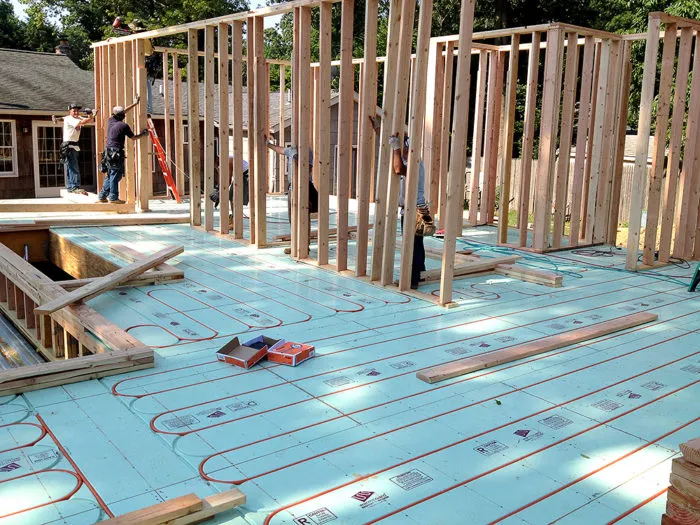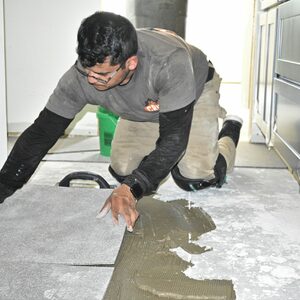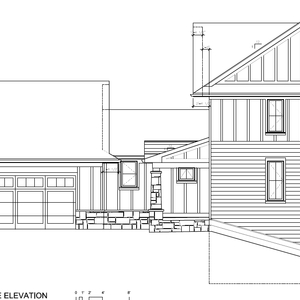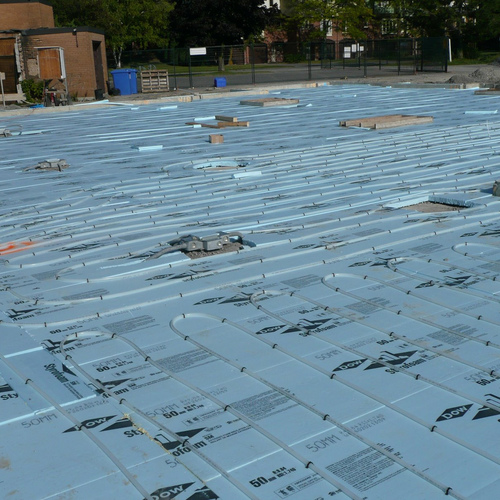
In the Minneapolis-St. Paul area, a GBA reader named jrsevy (let’s call him JR) is trying to sort out the HVAC system and other loose ends in a 4200-sq.-ft. house he will be building in the spring.
Among the construction details he provides in this recent Q&A post are Zip-R12 sheathing over 2×4 walls that have been insulated with closed-cell spray foam; R-10 XPS rigid foam insulation below grade on exterior foundation walls along with R-15 mineral wool batts on the inside; and R-50 of blown-in insulation in the attic over 2 in. of closed- cell foam as an air-seal. The basement slab will be insulated with R-10 of XPS.
The house also will get a ventilated rainscreen, not only to help the sheathing dry if gets wet but also to allow the siding to dry so paint will last longer. Windows on the main level will be on the large size—6 ft. and some 7 ft. high—in a mix of casements and fixed-glass units.
In addition to the single-story main floor, the house will have a lower level walkout basement. JR has been considering radiant-floor heat for the entire lower level and a traditional HVAC system for the main level.
“After reading that radiant heat isn’t worth the extra cost for well-insulated, airtight homes, I’d like opinions on whether this might be true for our build,” JR writes. “We could delete the radiant (but maybe have the PEX installed under the lower level slab, in case we change our minds later) and spend more on a cold-climate heat pump for heating and cooling.”
But the efficiency of radiant-floor heat is only one of several points GBA readers make as JR heads to construction. That’s where we start this Q&A Spotlight.
Weekly Newsletter
Get building science and energy efficiency advice, plus special offers, in your inbox.

This article is only available to GBA Prime Members
Sign up for a free trial and get instant access to this article as well as GBA’s complete library of premium articles and construction details.
Start Free TrialAlready a member? Log in















7 Comments
It seems strange that with all these questions and money being thrown around that there isn't an energy professional on the job guiding these decisions. It seems like having a pro could result in a good sized savings.
Why is this an either or?
Floor heat can be used with a heat pump..
Great point
If you want an energy professional, John Siegenthaler has a new Coffee with Caleffi on YouTube. Robert Bean's Healthy Heating is also very helpful. Nate Adams "The House Whisperer" also has good advice for comfort.
Yes - Warmboard is a great candidate for an air-to-water heat pump. In Zone 6 - the water temperatures run between 85F to 95F - which means you would get a good COP from the heat-pump. The advantage of hydronics is that you keep the refrigerant out of the house. A heat-pump can also do DHW, cooling, dehumidification and heat your hot-tub.
The over-shoot described by Ben above is an example of poor zone controls and probably dealing with PEX buried too deep in concrete. The comfort equation comes from Micro-zoning a house - so each room has its own temperature. You also need to deal with how materials react to heat. Heating Warmboard occurs much quicker than heating a slab.
The above post noted $70,000 for the floor heating system. That seems pretty aggressive to me. If you map out the material and equipment costs, the hourly rate of labor (even very skilled labor), and add it all up -- it is WAY less than $70,000. Someone is making fat margin off that project...
“[Deleted]”
Without radiant heat, the slab floor will be cool (feel cold) regardless of how much insulation is below the slab.
Even with radiant floor heat a design temp of 72 degrees doesn't feel warm - but its a lot more comfortable than a slab temp of 55 degrees.
Built a HERs 30 house before PV, ACH .6, R-15 under the slab, mini split heat. Ceiling temps are 70 degrees, 68 degrees at eye level, and slab is 55 degrees. House is draft free and comfortable but floor temp feels cold.
A more recent project combined both radiant floor heated by air to water heat pump, with standard air to air mini splits. This house is significantly more comfortable with 70 degree floors.
As air to water heat pumps become available, I think radiant heat will work together with mini splits to make houses more comfortable giving us the best of both worlds.
Log in or become a member to post a comment.
Sign up Log in